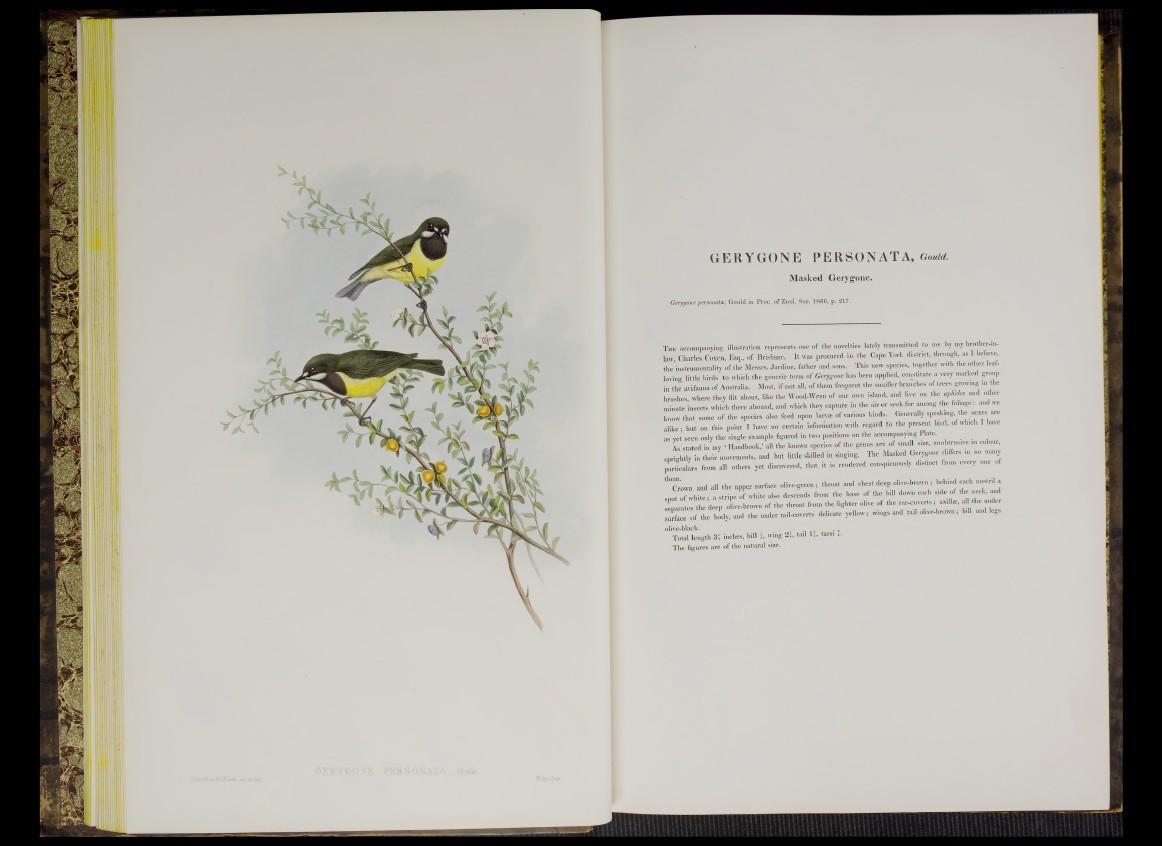
GERYGONE PERSONATA, Gould.
Masked Gerygone.
Gerygone per sonata, Gould in Proc. of Zool. Soc. 1866, p. 217.
The accompanying illustration represents oue of the novelties lately transmitted to me by my brother-in-
law Charles Coxen, Esq., o f Brisbane. It was procured in the Cape York district, through, as I believe,
the’instrumentality of the Messrs. Jardine, father and sons. This new species, together with the other leaf-
loving little birds to which the generic term of Gerygone has been applied, constitute a very marked group
in the avifauna of Australia. Most, if not all, of them frequent the smaller branches of trees growing in the
brushes, where they flit about, like the Wood-Wren of our own island, and live on the aphides and other
minute insects which there abound, and which they capture 9 the air or seek for among the foliage: and we
know that some of the species also feed upon larvm of various kiuds. Generally speaking, the sexes are
alike; but on this point I have no certain information with regard to the present bird, of which I have
as vet seen only the single example figured in two positions on the accompanying Plate.
As stated in my | Handbook,’ all the known species of the genus are of small size, unobtrusive m co our,
sprightly in their movements, and hut little skilled in singing. The Masked Gerygone differs in so many
particulars from all others yet discovered, that it is rendered conspicuously distinct from every one of
W and all the upper surface olive-green; throat and chest deep olive-brown ; behind each nostril a
spot of white; a stripe of white also descends from the base of the bill down each side of the neck, and
separates the deep olive-brown of the throat from the lighter olive of the ear-coverts; axillm, al1 the under
surface of the body, and the under tail-coverts delicate yellow; wings and tail olive-brown; bill and legs
olive-black. . ,
Total length 31 inches, bill v, wing 2j, tail I t, tarsi t.
The figures are of the natural size.